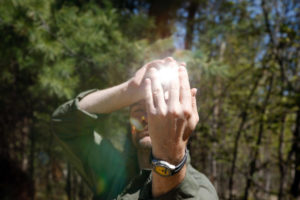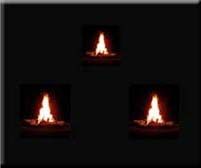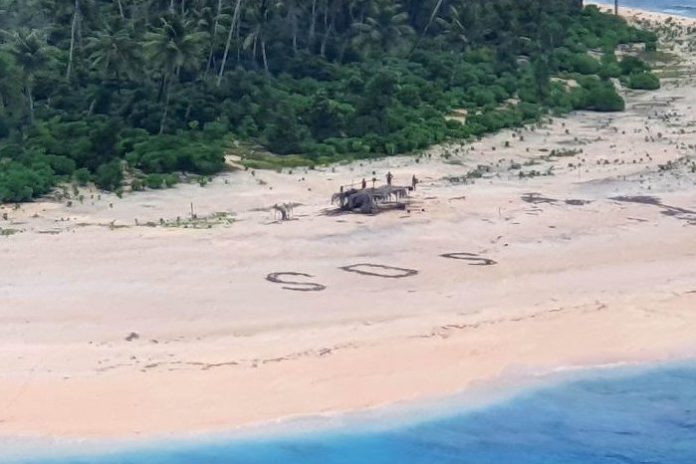Learning now how to signal SOS can save your life later on. More so, by recognizing the signal, you can save other people’s lives.
The SOS signal was first introduced in Germany on April 1, 1905, and it is generally referred to as the international Morse code distress signal. The SOS distress signal is a continuous series of three dots, three dashes, and three dots, without letter spacing (· · · – – – · · ·). The signal is now internationally recognized and over the past century it has saved thousands of lives.
1. Signal SOS using a mirror
You can signal SOS using a mirror or any material that reflects the sunlight. Aimed at an aircraft, a ship or other emergency vehicle will make you more visible. More so reflecting the light three short times, three long times, three short times you can let them know that you are in trouble.


Back in the late 1980s, Joel Slaughter, a 48-year-old oral surgeon was in the midst of a two-week raft trip down the Colorado River in Arizona, when his raft got caught in a wave. In the chaos, the rope wrapped around his leg and pulled him across the rocks. Fortunately, his 24-year-old son hurried to him and, at the last moment, cut the rope. But Joel was left with a broken knee and pelvis and a dislocated shoulder. He needed medical attention quickly. Fortunately, another member of the team knew how to signal SOS. Ho took a mirror and held it to reflect the sunlight. Using Morse code he spelled out an “SOS” message. In a few minutes, the pilot of a jet airliner flying 35,000 feet overhead saw the glint of the rafter’s mirror, and knew someone was in trouble below. He called for help, and soon a rescue helicopter arrived to carry the wounded Joel to safety [Associated Press].
There are common true stories of people lost on islands who signaled SOS with a mirror and saved their lives.
2. Signal SOS using a whistle
The International Whistle Code for help is much easier. All you have to do to signal SOS is to blow the whistle three times. Two blasts of the whistle is a call-back signal which means “Come here.” One blast can mean “Where are you?” or it can be a call-back signal if you hear anything that sounds like a code.
Related: Bushcraft Skills For Surviving in The Wild
3. Signal SOS using fire


Especially at night you can signal SOS using a fire. Build three fires in a triangle or in a straight line, with about 100 feet between them. Three fires are a globally recognized distress signal.
At daytime, you can signal SOS using smoke. But not all fires generate the amount of smoke you need to create an efficient signal, and not all fires can necessarily be perceived as a call for help. After having started the fire throw in it some green wood and leaves to create more smoke. Also, select the highest possible spot. Wind and air will make the smoke travel away from you, there will always be a trail back.
4. Signal SOS using sand or stones
Sand or other friable soil may be written in. Or you can use stones if there are plenty. Using your feet or scrape the sand to a depth of about 4 inches (10cm) and about 2 inches (5 cm) deep so the soil or sand cannot fill itself in and create the SOS distress signal. Sand is nice to write in if it is warm. A good time to use it is when the tide has gone back down. You will have twelve hours before your signal got washed away by the rising water.
Using rocks, you can write SOS or signal SOS by building three gigantic X marks in the form of a triangle.
5. Signal SOS using a flashlight or your mobile phone
Obviously you can signal SOS using flashlights. If you have a target you are attempting to signal, flash out SOS in Morse (three short flashes, three long flashes, three short flashes) in its direction. If you don’t have a flashlight use your cell phone. That of course, assuming that you don’t have a signal to make calls.
6. Signal SOS using a torch
If you don’t have a flashlight, but you managed to build a fire you can signal SOS at night using a torch. Find something to mask the light of the torch from the perspective of the intended aircraft, ship or helicopter. Shift the object that covers the light to signal SOS.
7. Blue and red flashing lights
Flashing blue and red color typically mean there has been an accident or someone needs rescue. Typically, these lights are triggered by police or firemen. If you don’t have the means to create a fire, use some of your clothes to make a flag. A waving blue-red flag can be seen from a very high altitude, and you can be easily identified.
8. Signal SOS using parts of your body
If you have absolutely nothing to signal SOS, think of the areas of your body you can use. Wave your arms and hands sideways and down to draw attention. If the potential rescue vehicle is near, simply stand with your hands and arms in the air. Ensure you are in a major clearing.
You may also use your eyes (blinking) to indicate SOS. During the Vietnam War a prisoner was able to communicate without alerting his captors by blinking his eyes in Morse code. Yes, and there are at least 3 more known true cases of people who were abducted and threatened with death in case they say anything to the police. They blinked their way out of the trouble.
9. Signal SOS using orange smoke
On certain ships, orange smoke is emitted from the stack if the ship is in distress. Special fuel is burned to create the orange color, and it can clearly be seen on the horizon. You can either learn how to make a color smoke bomb or you can simply buy an orange smoke flare. Orange color is very noticeable in every season and climate.
Related: Signalling Techniques That Could Save Your Life
10. Signal SOS by tapping
If you find yourself in a confined space for some reason (kidnapped, trapped, buried alive, etc.) you can tap the SOS Morse code against a wall or the inside of a car trunk. Your chances of anyone finding you, without alerting the kidnappers for example, somewhat increase.





















